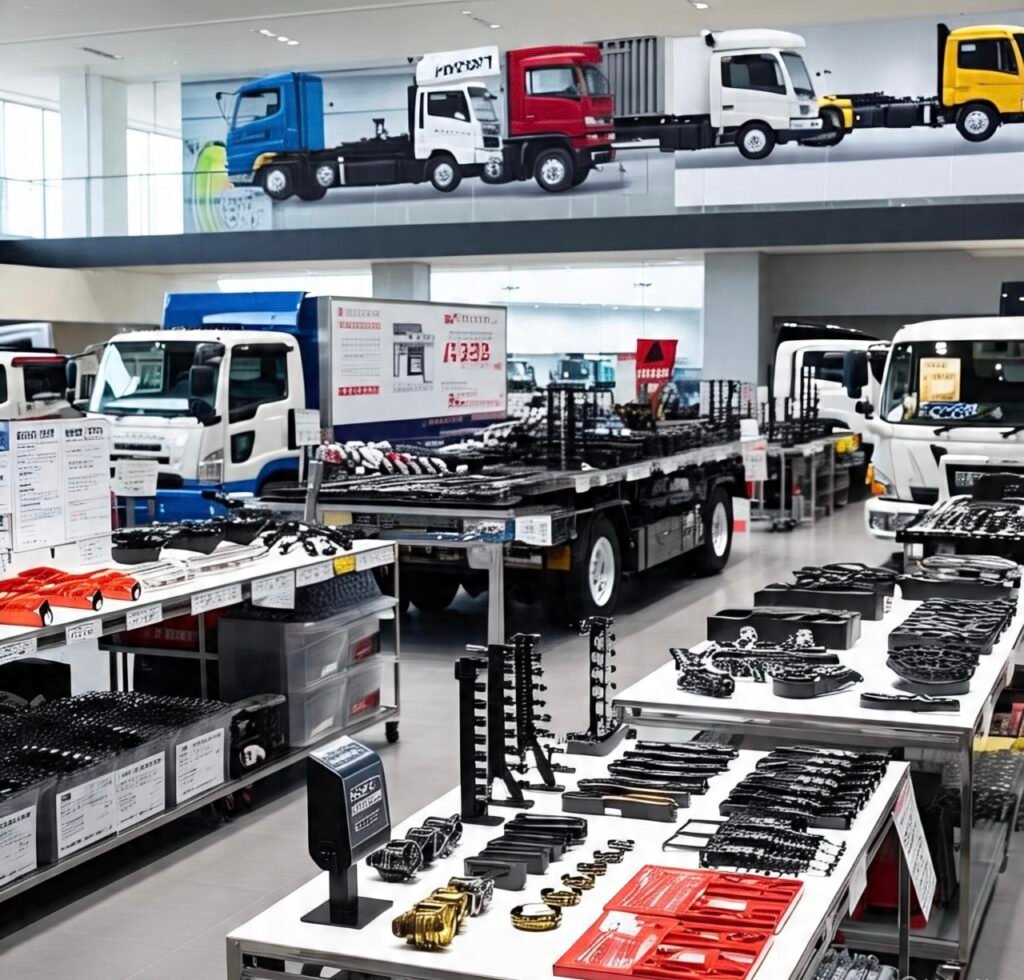Japanese commercial vehicles dominate global markets through engineering excellence and operational reliability, creating substantial demand for specialized replacement components across diverse industry sectors. Fleet operators and independent mechanics increasingly require centralized access to comprehensive inventories that span multiple manufacturers and model generations. Accessing the full range of truck parts for Japanese models through consolidated suppliers has become essential for maintaining operational efficiency and minimizing vehicle downtime. Advanced inventory management systems now enable single-source procurement for complex fleets containing vehicles from different manufacturers, eliminating the inefficiencies associated with managing multiple supplier relationships while ensuring component compatibility and quality standards remain uncompromised.
Comprehensive Engine Component Systems
Japanese truck manufacturers have developed sophisticated powertrain technologies that require precise component specifications across engine families. Isuzu’s 4HK1-TC turbocharged diesel engine, commonly found in NPR and NQR chassis configurations, utilizes advanced common rail fuel injection systems operating at pressures exceeding 29,000 PSI. These systems demand exact component matching for injectors, high-pressure pumps, and rail assemblies to maintain emission compliance and fuel efficiency standards.
Mitsubishi Fuso’s 4M50 engine series incorporates variable geometry turbocharger technology with electronic wastegate control. The turbocharger assemblies require specific actuator calibrations and position sensor configurations that vary between emission compliance levels. Professional suppliers maintain detailed application guides showing these variations across model years and regional specifications.
Hino’s J05E and J08E engine families feature sophisticated exhaust gas recirculation systems with electronically controlled coolers and multiple temperature sensors. These components operate in extreme thermal environments and require materials engineering that meets specific thermal expansion coefficients and corrosion resistance standards established by original equipment specifications.
Transmission and Drivetrain Assemblies
Japanese commercial vehicles employ diverse transmission technologies ranging from traditional manual systems to advanced automated manual transmissions (AMT) and full automatic configurations. Aisin’s 6-speed manual transmissions used in medium-duty applications feature synchronized shifting mechanisms with precise gear ratios optimized for commercial duty cycles.
The sophisticated hydraulic control systems in automatic transmissions require specific fluid specifications and filtration components. Allison automatic transmissions, commonly paired with Japanese chassis, operate with transmission control modules that interface with engine management systems through CAN bus networks. These electronic components require exact software compatibility and calibration parameters.
Differential assemblies in Japanese trucks often incorporate limited-slip mechanisms and electronic traction control integration. These systems use multiplate clutch packs with specific friction material compositions and spring preload specifications that affect torque distribution characteristics under varying load conditions.
Electrical and Electronic Systems Integration
Modern Japanese commercial vehicles integrate complex electronic architectures that control everything from engine management to body functions. The electrical systems utilize multiple networked control modules communicating through Controller Area Network (CAN) protocols operating at specific baud rates and message formatting standards.
Body control modules manage lighting circuits, door locks, and auxiliary equipment interfaces. These systems often require programming and calibration procedures using manufacturer-specific diagnostic tools. Component replacement frequently involves parameter initialization and system adaptation procedures that ensure proper integration with existing vehicle networks.
Electronic brake systems (EBS) in Japanese trucks incorporate wheel speed sensors, pneumatic pressure transducers, and electronic control units that interface with stability control systems. These components require precise calibration and often involve complex bleeding procedures that differ significantly from traditional air brake system maintenance.
Chassis and Suspension Components
Japanese truck chassis design emphasizes durability while maintaining ride quality appropriate for cargo protection. Front suspension systems typically employ independent configurations with torsion bar or coil spring arrangements, while rear suspensions utilize multi-leaf spring packs designed for specific gross vehicle weight ratings.
Shock absorber specifications vary significantly between applications, with valving characteristics tuned for empty versus loaded vehicle conditions. Some models incorporate load-sensing suspension systems that automatically adjust ride height and damping characteristics based on cargo weight detection through air pressure sensors and electronic control modules.
Steering systems in modern Japanese trucks often feature power assistance through hydraulic or electric power steering pumps. These systems require specific fluid specifications and maintain precise pressure regulation through computer-controlled relief valves. Component replacement typically requires system bleeding procedures and steering angle sensor calibration using diagnostic equipment.
Centralized procurement strategies for Japanese truck components have evolved to address the complexity and interdependence of modern commercial vehicle systems, providing fleet operators with the comprehensive technical support necessary for efficient maintenance operations.

